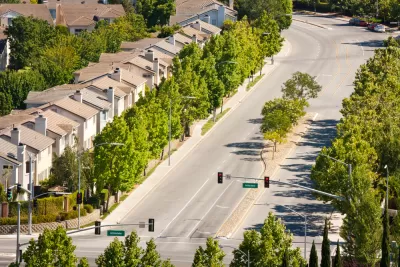A recent Mercatus Institute paper addresses the frequency of minimum density regulations, maximum parking requirements, and similar regulations.

I recently coauthored a paper for the Mercatus Institute (a think tank operating out of George Mason University) about the prevalence of regulations designed to promote smart growth and green building—in particular, maximum parking requirements, minimum density requirements, and rules related to LEED certification.
We focused primarily on ascertaining how many cities have actually enacted such regulations; our sample was 24 American cities with populations of between half a million and one million people. We chose this sample because it is large enough to reflect a reasonably diverse group of cities, yet small enough to be manageable. The sample includes transit-oriented cities like San Francisco and Washington, car-oriented cities like El Paso and Fort Worth, declining older cities like Detroit and Baltimore, and growing cities like Portland and San Jose.
Although critics of smart growth often claim that the smart growth movement seeks to "force" density on Americans, we found that minimum density requirements are in fact quite rare. Only two of our 24 cities (San Jose and Portland) generally require minimum densities for residential zones. Both cities, however, have a wide variety of zones, and have plenty of low-density zones. For example, San Jose has a minimum density in its low-density residential zone—but this minimum density is only one dwelling unit per acre. Because conventional planning wisdom seems to be that at least seven units per acre is necessary for decent bus service, San Jose is hardly mandating smart growth. Similarly, Portland has one zone where the maximum density is one dwelling unit for every two acres; thus, the city's density requirements constrain flexibility more than they mandate smart growth.
Maximum parking requirements are slightly less rare. Only three of the 24 cities (San Francisco, Louisville, and Fort Worth) have maximum parking requirements for every (or almost every use): interestingly, two of them (Louisville and Fort Worth) are car-oriented cities whose maximums are calculated as a percentage of their minimums. For example, Louisville requires 1.5 parking spaces per dwelling unit in most of its residential zones, and its parking cap is three spaces per unit—a lot of parking. Limited parking caps are more common: seven cities have imposed parking maxima for some or all commercial uses, and five for specified parts of a city (usually near downtown or near transit stations).
In addition, we also discussed rules requiring "green" (that is, energy-conserving) building design. Only four cities (San Francisco, Austin, Boston, and San Jose) require developers to meet LEED or similar green building guidelines—and in all but San Francisco, these rules are limited to larger projects. However, many other cities provide a variety of incentives for green building.
What about the wisdom of these rules? Because these regulations are often either new or not particularly controversial, we did not find very much information about the real-world side effects of these rules. All of these regulations are likely to have some positive results: for example, a smaller amount of parking may lead to less driving and thus to less pollution, while more compact development might lead to higher transit ridership as more people located near bus and train stops.
On the other hand, any regulation could, in theory, burden building enough to deter development: for example, if builder X decides that there is not enough market demand to justify building at minimum density Y, X might decide to build housing in more permissive suburbs. Similarly, if X cannot afford the short-term expense of green building features or thinks tenants will want more parking than a city allows, it may move to suburbia. But whether any of these negative effects has actually occurred may require additional research.

Maui's Vacation Rental Debate Turns Ugly
Verbal attacks, misinformation campaigns and fistfights plague a high-stakes debate to convert thousands of vacation rentals into long-term housing.

Planetizen Federal Action Tracker
A weekly monitor of how Trump’s orders and actions are impacting planners and planning in America.

In Urban Planning, AI Prompting Could be the New Design Thinking
Creativity has long been key to great urban design. What if we see AI as our new creative partner?

King County Supportive Housing Program Offers Hope for Unhoused Residents
The county is taking a ‘Housing First’ approach that prioritizes getting people into housing, then offering wraparound supportive services.

Researchers Use AI to Get Clearer Picture of US Housing
Analysts are using artificial intelligence to supercharge their research by allowing them to comb through data faster. Though these AI tools can be error prone, they save time and housing researchers are optimistic about the future.

Making Shared Micromobility More Inclusive
Cities and shared mobility system operators can do more to include people with disabilities in planning and operations, per a new report.
Urban Design for Planners 1: Software Tools
This six-course series explores essential urban design concepts using open source software and equips planners with the tools they need to participate fully in the urban design process.
Planning for Universal Design
Learn the tools for implementing Universal Design in planning regulations.
planning NEXT
Appalachian Highlands Housing Partners
Mpact (founded as Rail~Volution)
City of Camden Redevelopment Agency
City of Astoria
City of Portland
City of Laramie





























